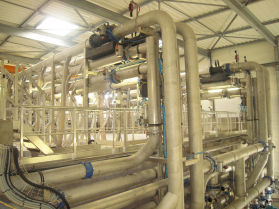sludge treatment
Reading time:In general, the overall design of treatment lines (water and sludge) must be integrally optimised. This frequently requires sludge production to be minimised, given that treating and removing this sludge often represents the greatest proportion of a wastewater treatment system’s overall operational costs.
Sludge output can be reduced by:
- reducing wastewater generation and pollutant loads in each process and the overall plant (see internal recycling);
- restricting as much as possible the use of mineral reagents resulting in sludge production particularly if the same result can be achieved either with polymers, biological treatment, or through oxidation;
- when these are feasible, preference should be given to biological processes that produce lesser amounts of sludge: methane fermentation, or membrane biological reactor (Ultrafor);
- reducing the mass of biological sludge produced, via anaerobic digestion (see chapter liquid sludge treatment) or, more radically, by means of Biolysis processes (see chapter biological processes) which sometimes reduce sludge production by 50 to 85% . This process will produce a final residue with a higher mineral content, one that is therefore more easily dewatered and more stable.
The following various types of sludge are encountered depending on the type of industry:
- primary and tertiary sludge: these are specific to each type of industry. Their end usage may vary and may require upstream segregation as described (see system organisation) and specific treatment that will have to be optimised according to various parameters: landfill regulations, agricultural/land application, investment/ operational costs, etc.;
- biological sludge: treatment principles are identical to those applied in municipal wastewater plants. A high


ratio may sometimes be characteristic of this type of sludge (unless using Biolysis or anaerobic digestion type processes) and the sludge will often be more difficult to dewater.
Bookmark tool
Click on the bookmark tool, highlight the last read paragraph to continue your reading later













